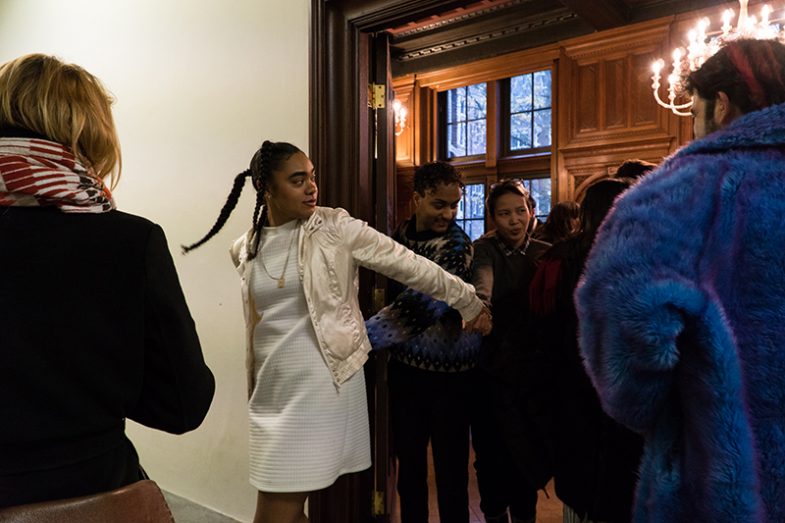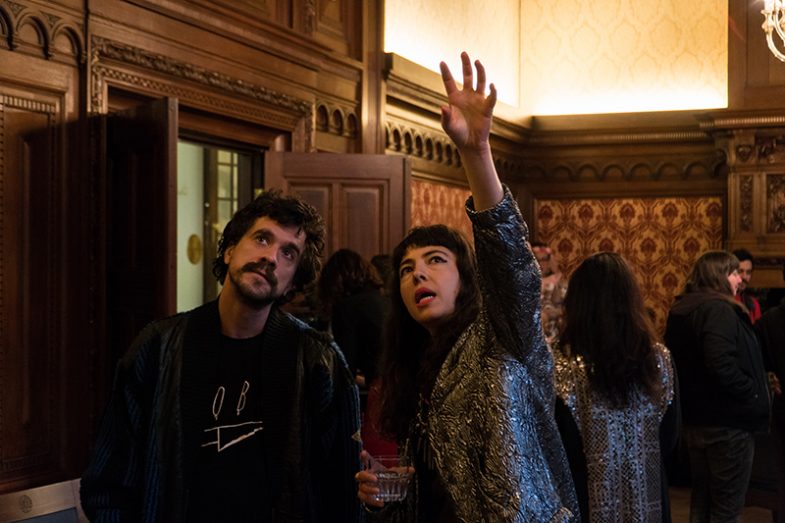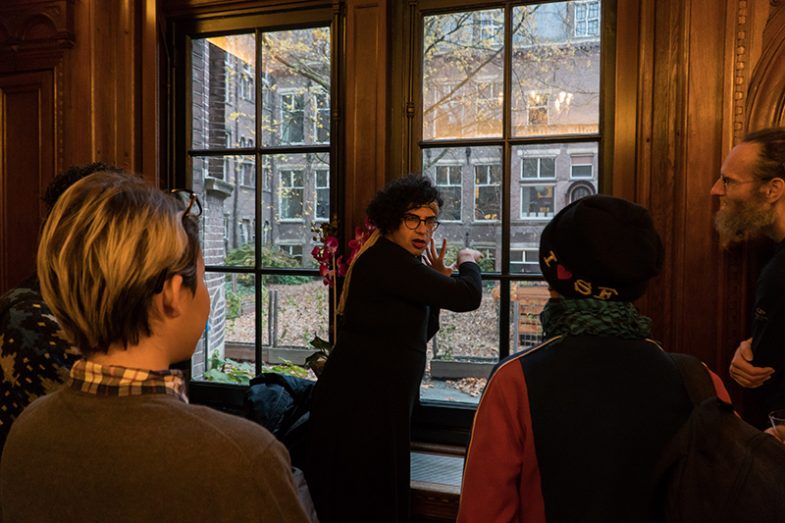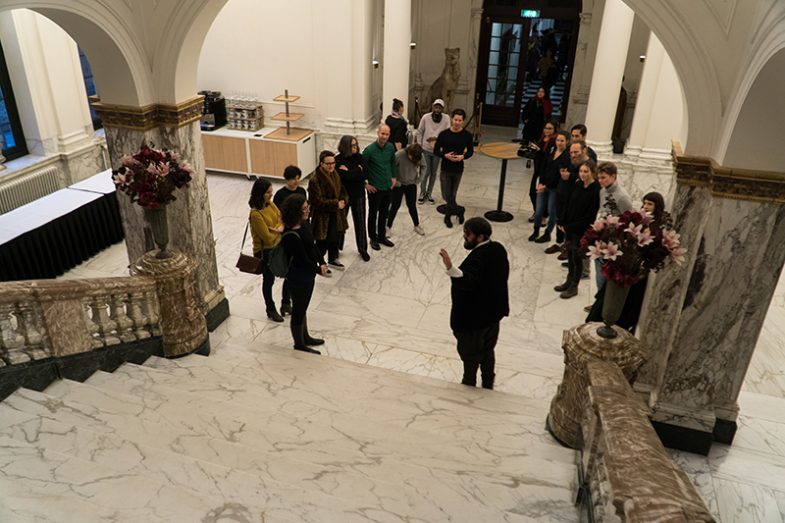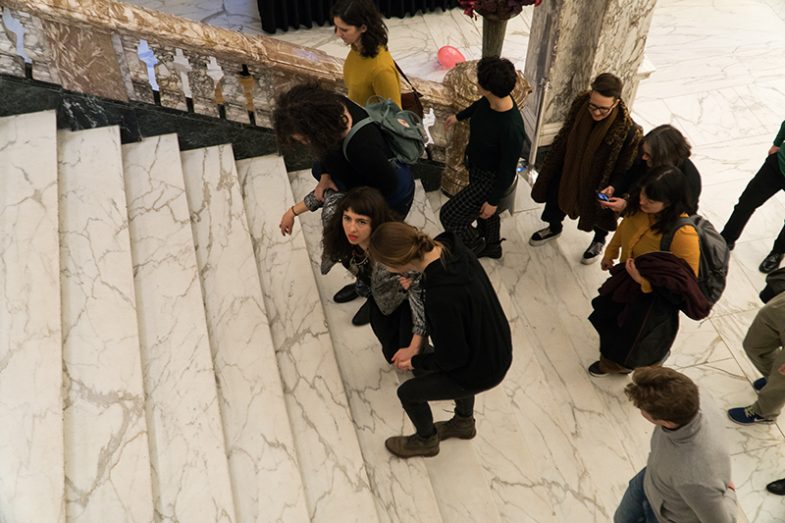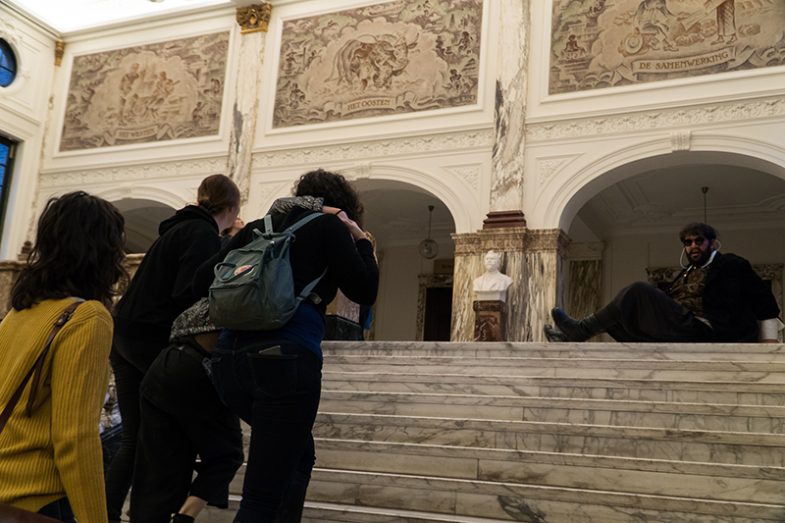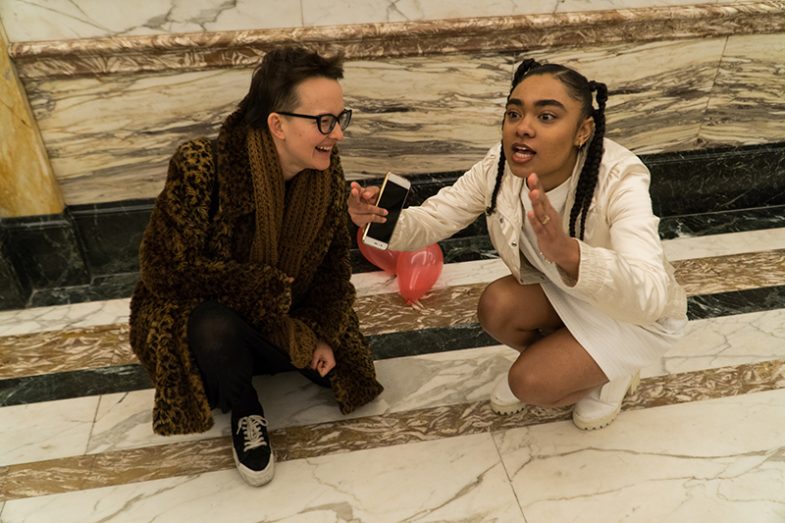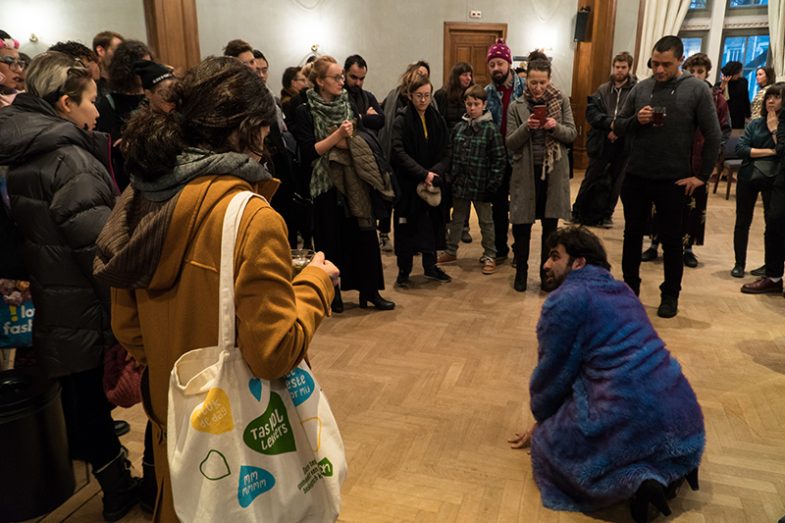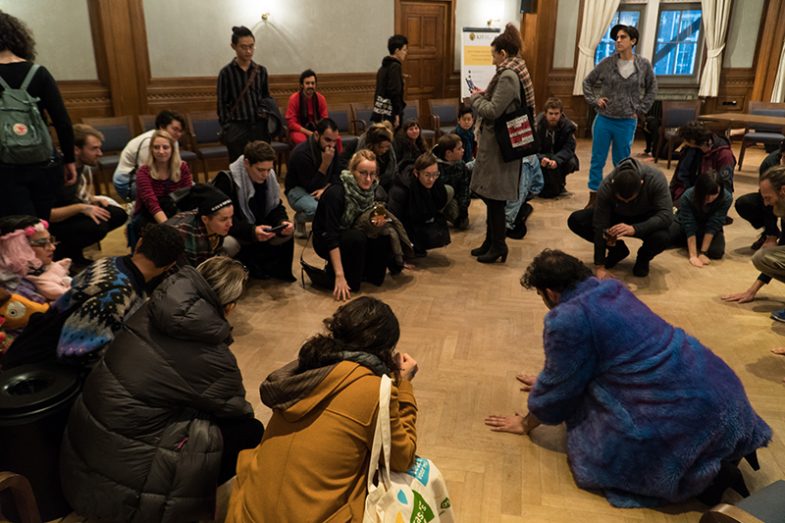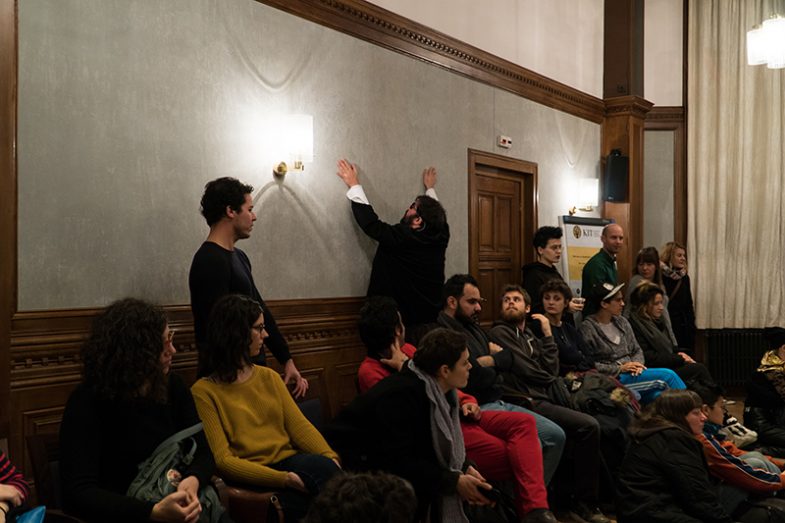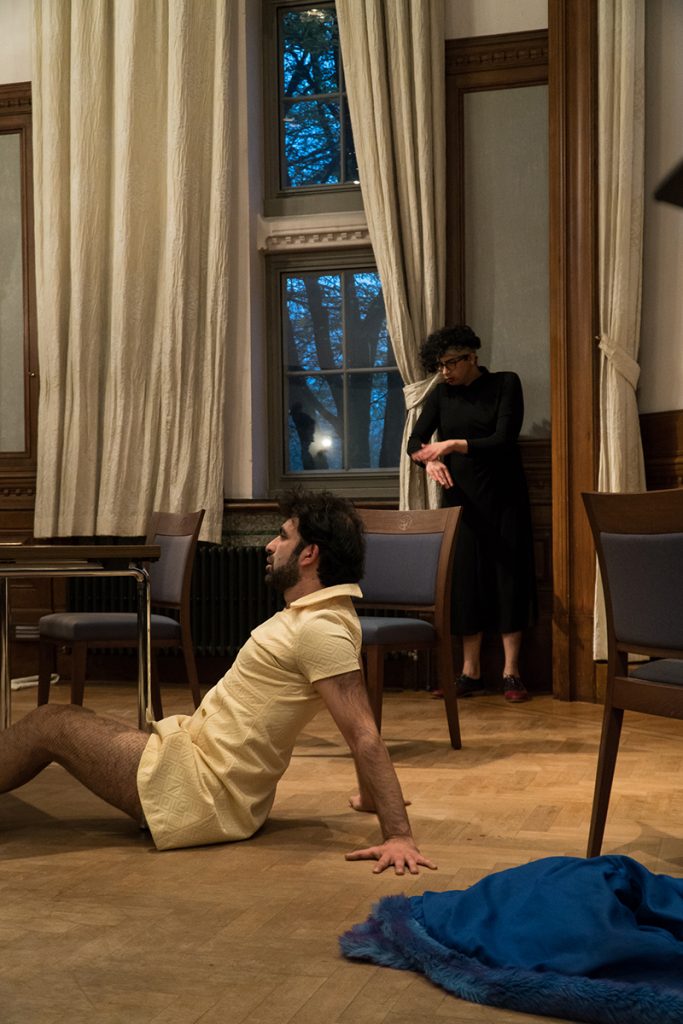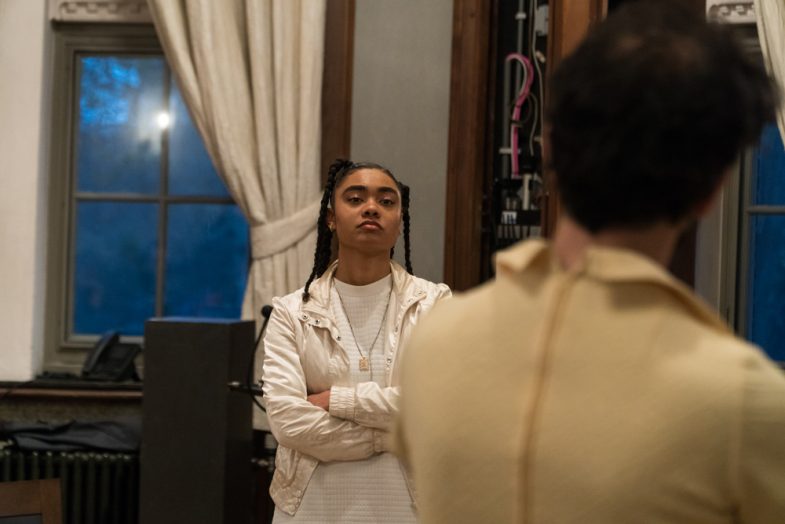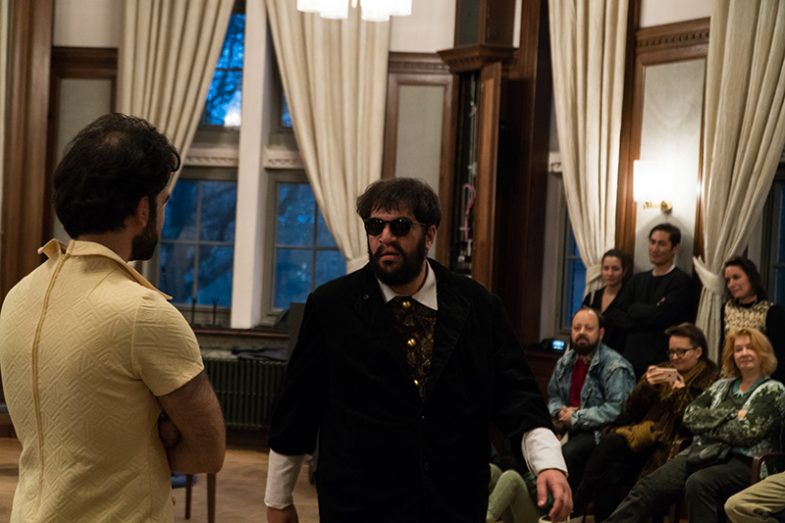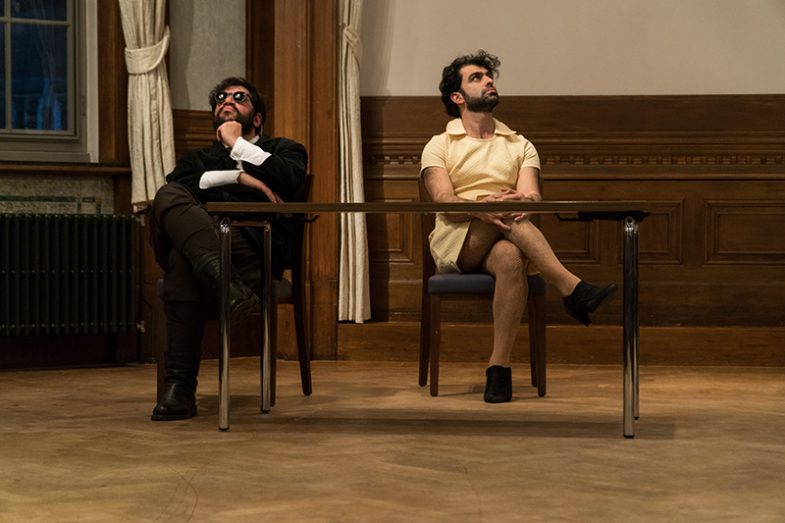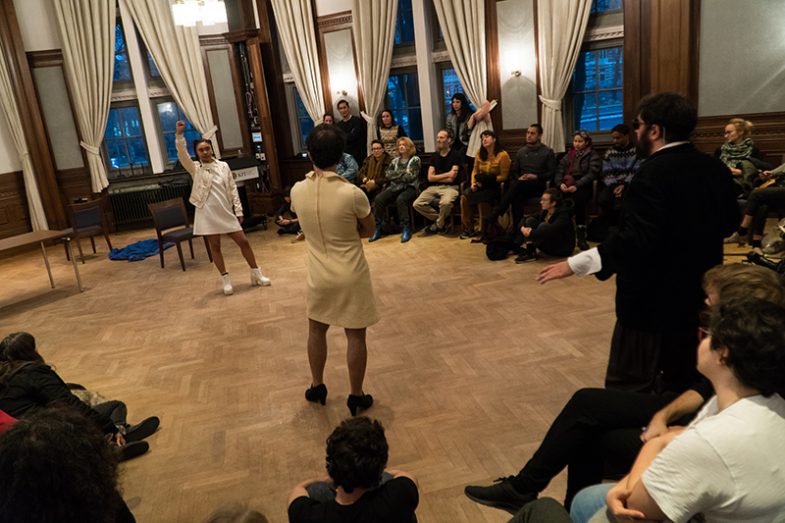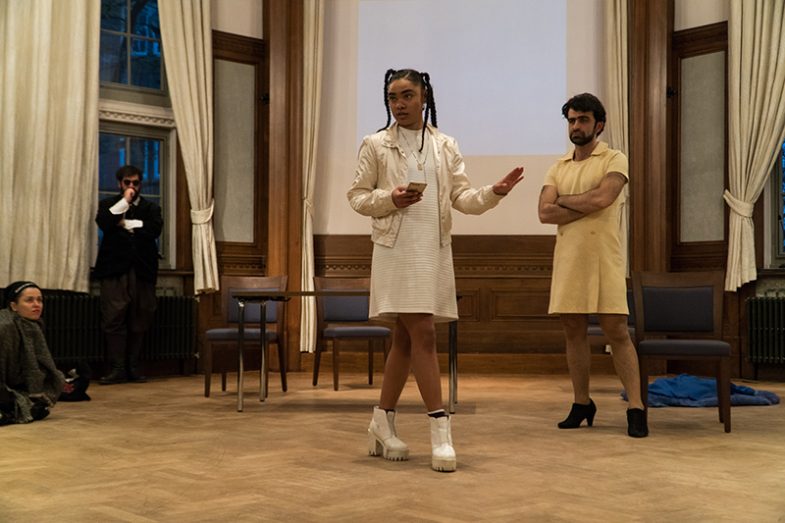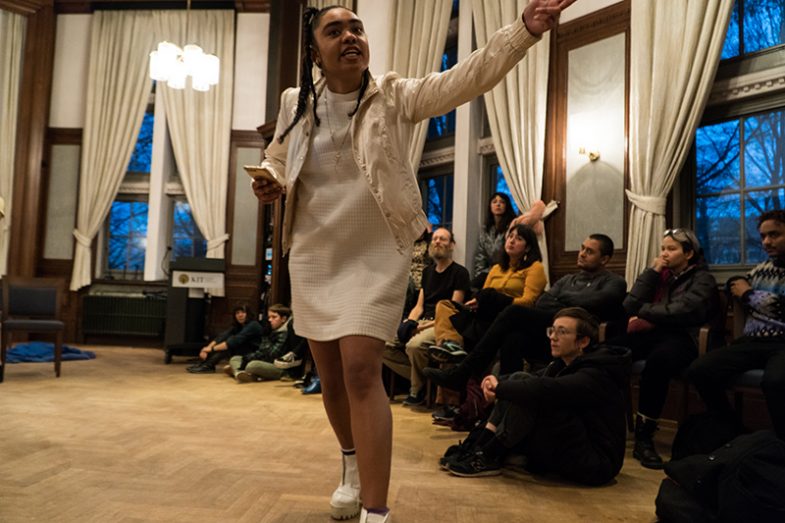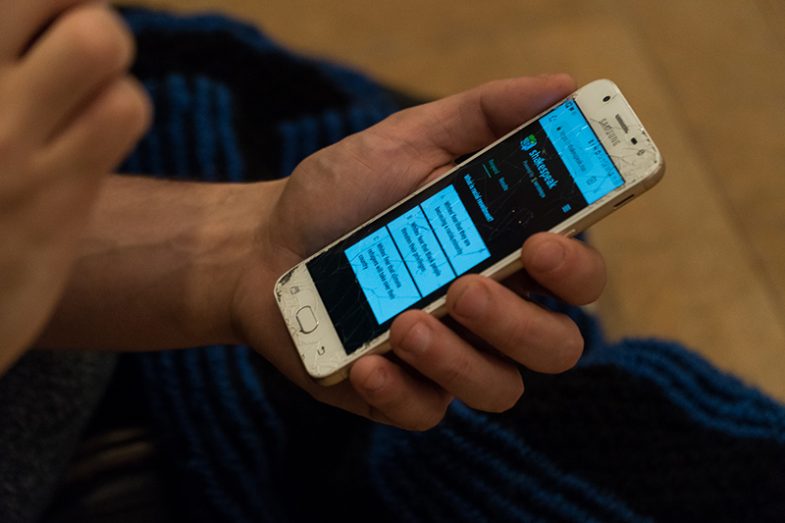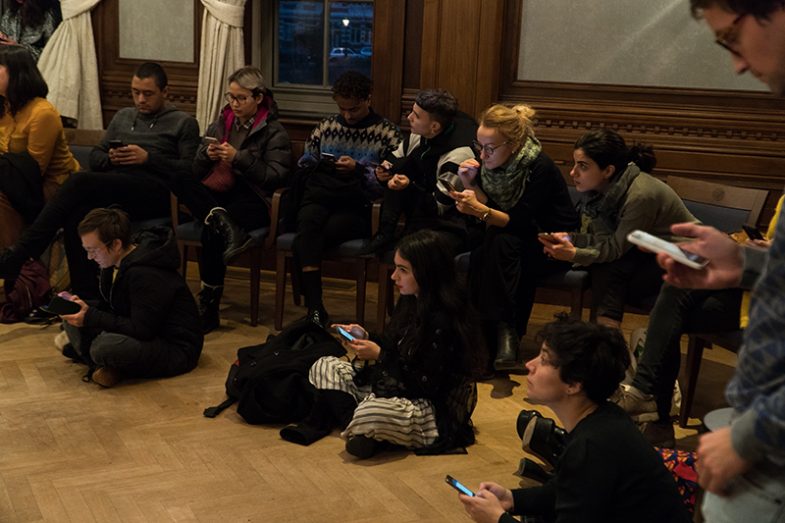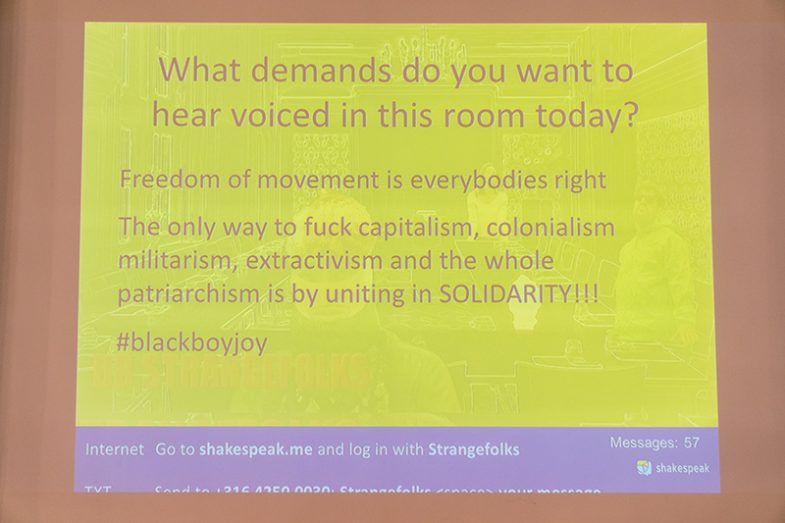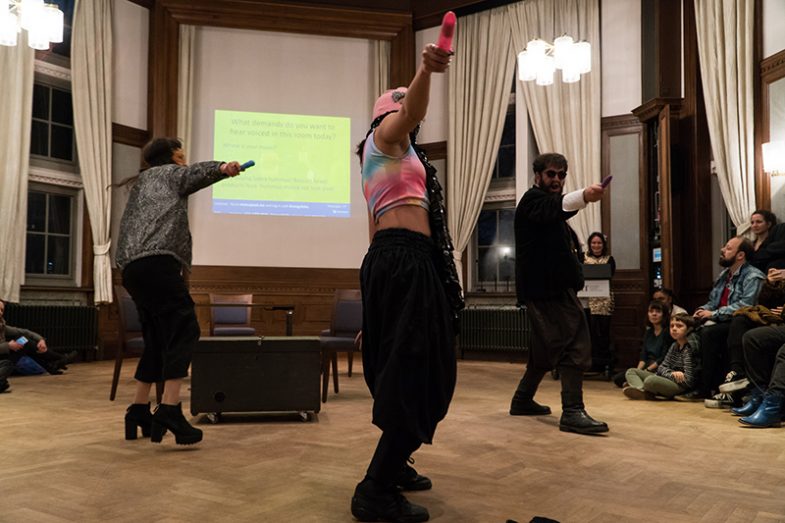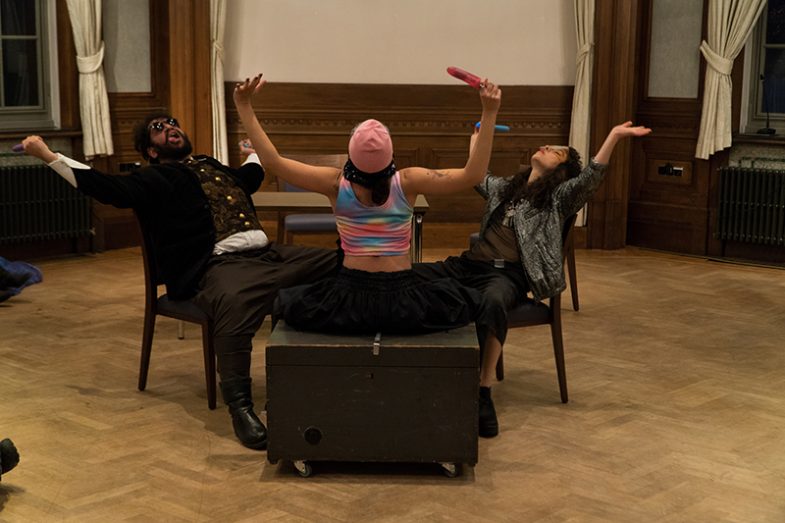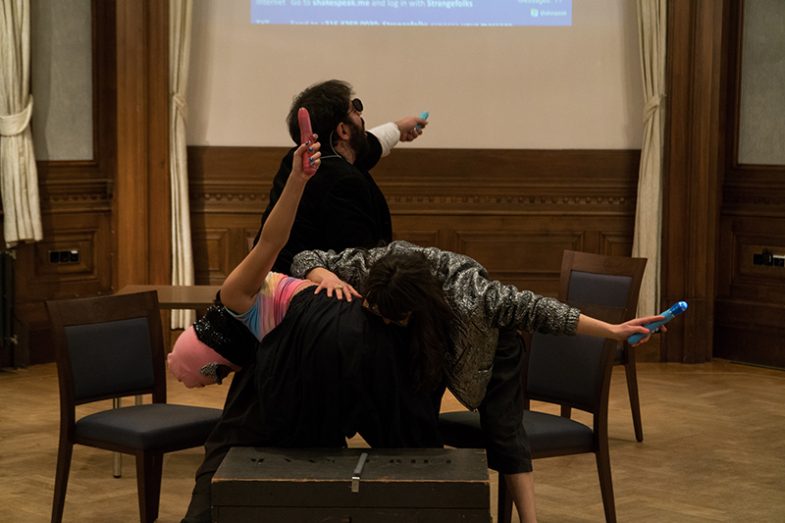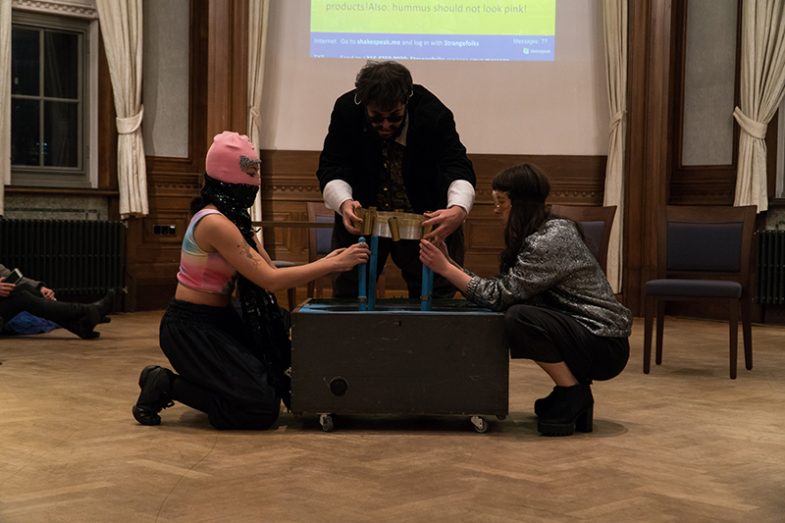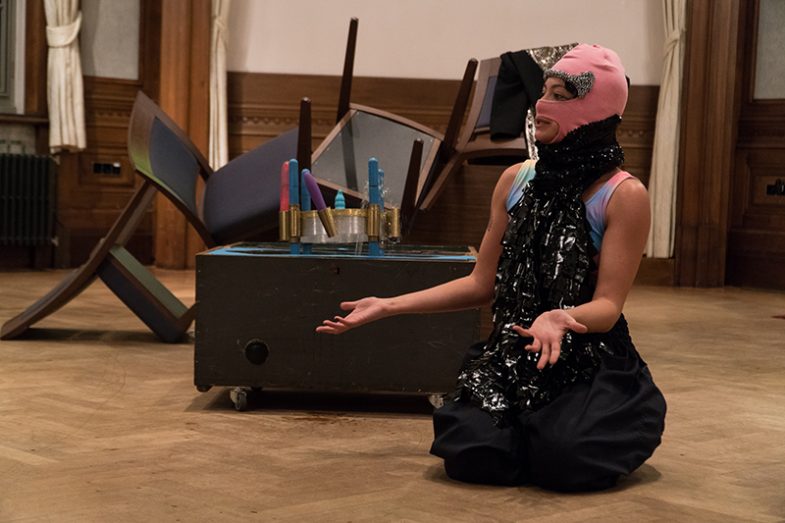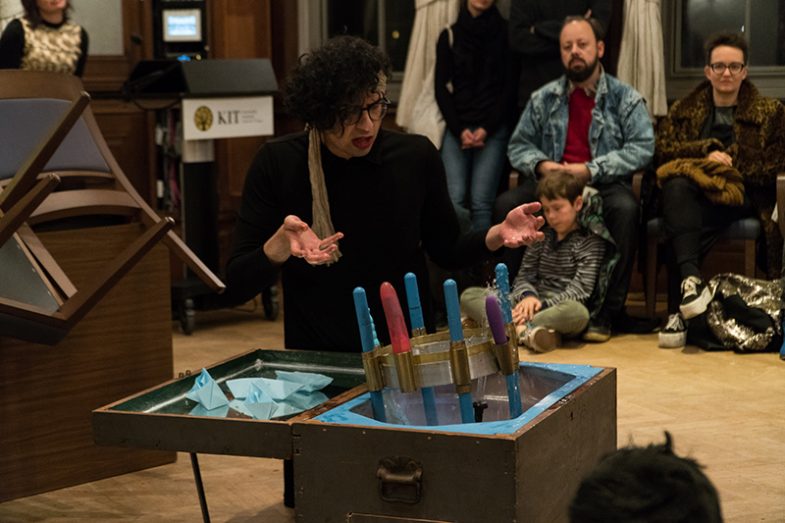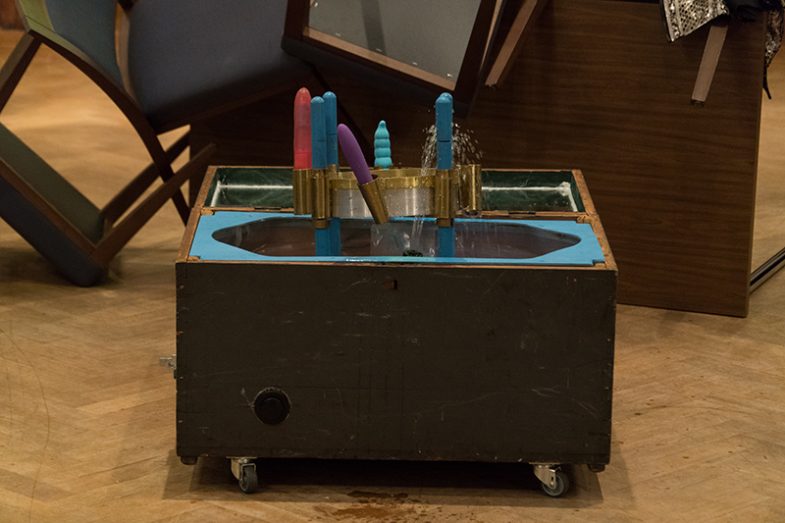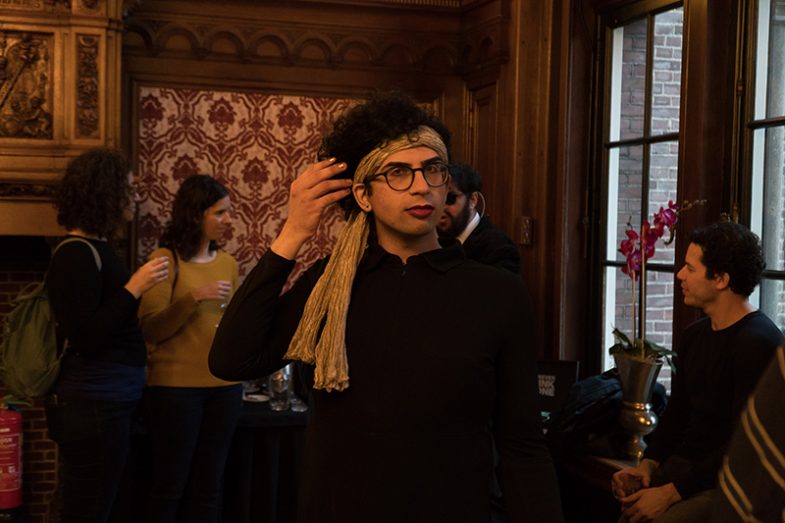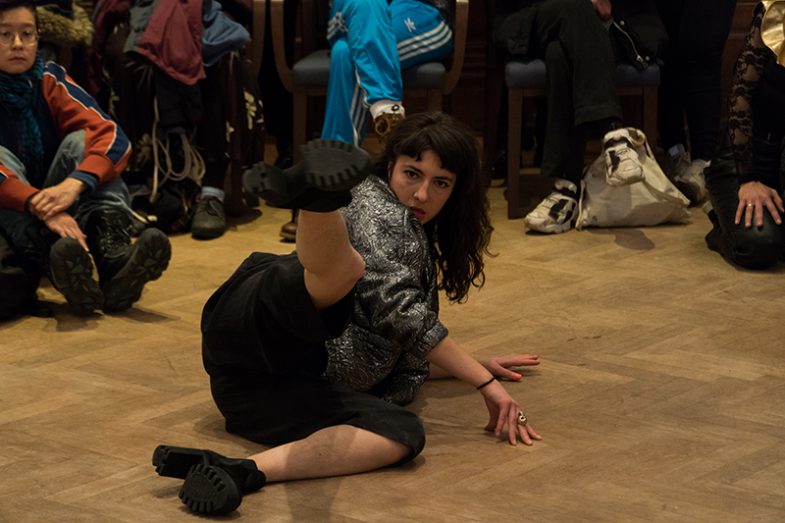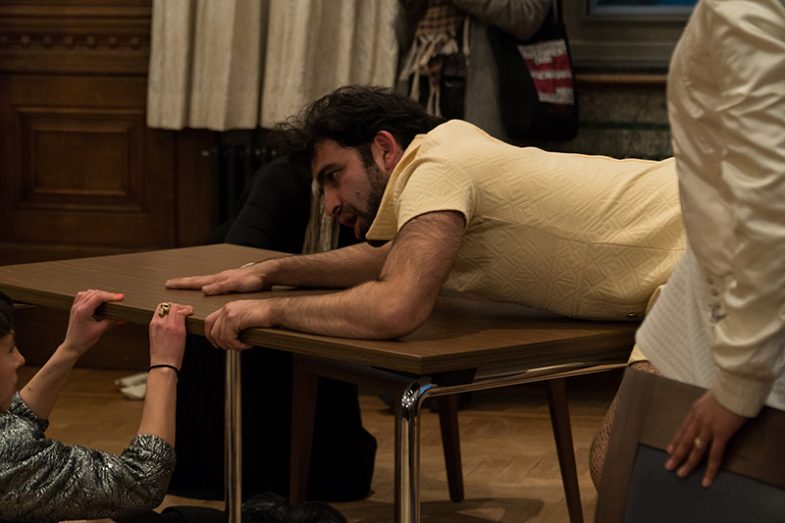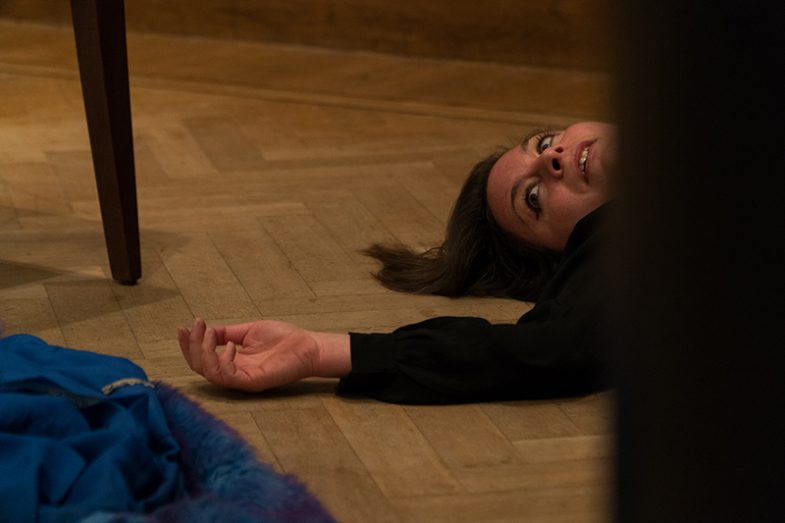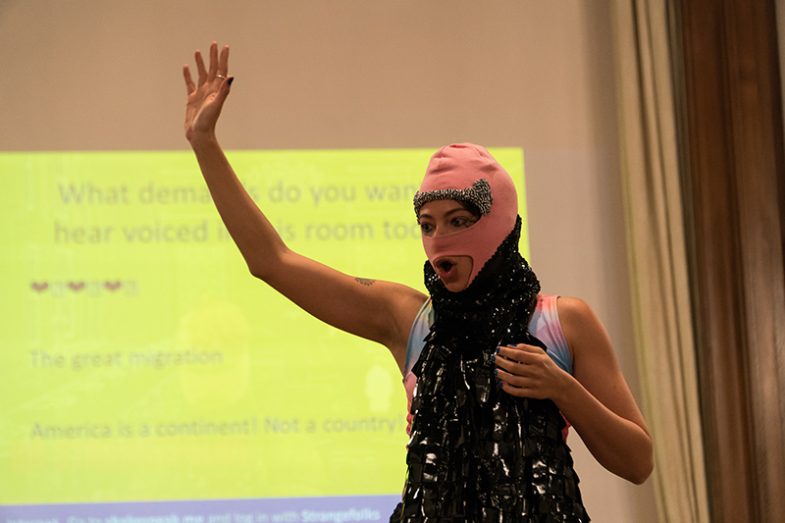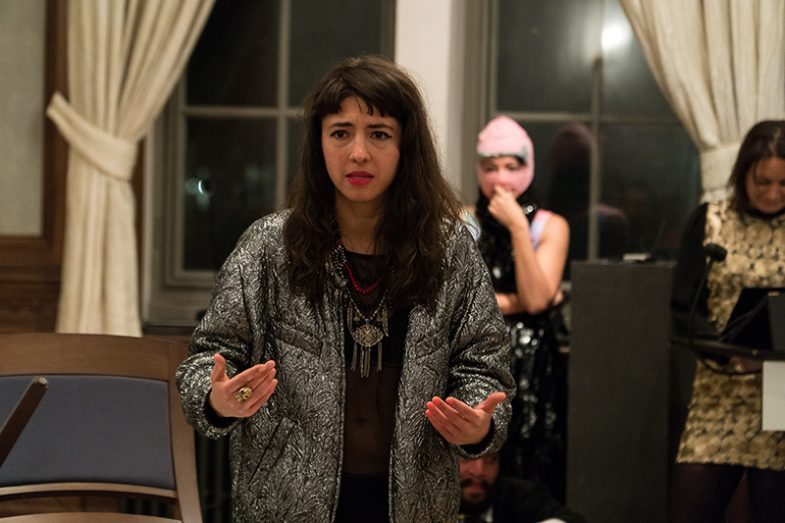Please see my latest portfolio in PDF format here below.
Uncategorized
Protected: Kambiz Roustayi
Dr Strangefolks Performance
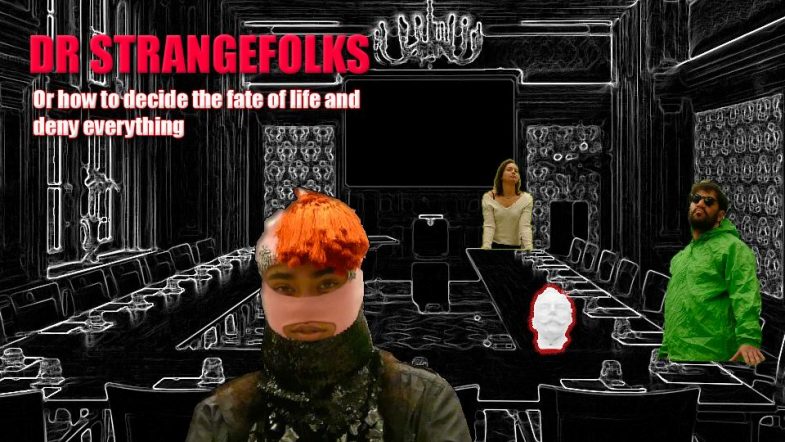
Header
About Dr Strangefolks Performance
Dr Strangefolks is a performance piece that aims at penetrating a colonial and non democratic institution where fate of many lives were decided.
“They are not only ruling over our fate, but also deciding our ways of life, for example what we are going to eat, how we should dress or when we should call our mothers…” chirped the non-fascist bird.
Walls, instruments of control, are mostly build by paranoid heterosexual male to stop penetrations of strange bodies in the feminised nationhood. This paranoid authoritarian subject perceive his body under constant penetration threat of dangerous and foreign objects.
With temporary penetration method Dr Strangefolks performance infiltrate into the first colonial museum in the world: the Dutch Royal Tropical Institute. Acting as a business entity we rent the institute for a conference knowing that artistic performance would not be tolerated or face the gate keepers.
Dr Stangefolks performance is committed to the development of temporary, imaginative, anti-colonial and feminist futures to come after the end of life due to upcoming climate change catastrophe in the next 12 years. Variety of participatory performance score are at play but one the most important moment towards achieving that imagination is when everyone present at the event is able to share their agenda’s and demands before end of life as we know it.
We voice those demands loudly to vibrate the colonial architecture and penetrate through its walls, demanding non-normative, strange and anti-patriarchal bodies and voices to replace the white heterosexual paranoid man cluster in the ‘war room’* conference table.
In honour to ancestors like Ana Mendieta, Marielle Franco and so many females that couldn’t finish their works.
*War room refers to a scene in a cold war movie Dr Stangelove (Stanley Kubrick1964) where white heterosexual men dominate a large conference table in the war room to decide the fate of humanity when the soviet Doomsday is triggered. Modern and contemporary versions of similar events would be Berlin Conferences (1884–85), Sykes-Picot Arrangement, Heeren XVII (the Lords Seventeen) or G8, G20, etc.
Credits
Project created by Thais Di Marco, Ehsan Fardjadniya, Judith Kende
Performered by and with Usman Ahmedani, Rodrigo Batista, Paula Chaves, Thais Di Marco, Ehsan Fardjadniya, Judith Kende, Sydney Lowell
Production of the day by Monica Sharon
Press and PR: Chihiro Geuzebroek
Photographery by Chun-Han Chiang
Videography by Roberta Marques
Info
Time: 25th of November 2018 at Tropen Institute Amsterdam
15h to 16h Arrival and reception
16h to 17h Conference Performance
17h to 18h Drinks at the bar
Facebook Event: https://www.facebook.com/events/183510895899031/
Address: Mauritskade 63, Amsterdam
Language: English
Tickets at the door for 8€. For those who can not afford it any donation is welcome.
Thanks
Thank you to the following contributors for performance research lab: Fernanda Romman, Mavi Veloso, Karina Villafan.
Also thanks to Leoni Kuipers, Sameh Osman, Noah Volker.
Funded by
Amsterdams Fonds voor de Kunst
Photo Documentation
Guided Art Teur
Rubbing and Scrubbing
Power Contest
Reading War Crime Testemoney of Dutch Veteran Joop Heuting in Indonesia
12 Year Before End of Life and Your Demands
Outsider with a Delivery
Fountain
Portraits
Video Documentation
Dutch Racism
The Ideologically Colonized Metropole: Dutch Racism and Racist Denial by Melissa F. Weiner
[pdf-embedder url=”http://ehsancritique.com/wp-content/uploads/2017/06/Dutch-racism.pdf”]
Movies that Matter | Raving Iran
Movies that Matter | Raving Iran
This month, I’m the quest speaker of Movies that Matter, Amnesty International, about Raving Iran film. Tonight, 10 May, at Natlab Eindhoven and Kriterion Amsterdam. 14 May at Filmhouse The Hague and 24th in Arnehem. You can read my text here below:
About ‘Raving Iran’ film
By Ehsan Fardjadniya
What does raving actually mean? Oxford dictionary definitions are: ‘Talk wildly or incoherently, as if one were delirious or insane’. Second meaning is to ‘address someone in an angry, uncontrolled way’ or ‘speak and write about someone or something with great enthusiasm or admiration’. In a more informal way raving means ‘attending or taking part in a party with electronic dance music and drugs.
After watching the film ‘Raving Iran’ I like to question who is actually raving Iran and how? Are the main characters of the film, Anoosh and Arash, raving Iran by going around deliriously and talking in the language we don’t understand? This could have been the case in the colonial times, where orientalist scholars represent Middle East and its people in stereotype ways. In ‘Raving Iran’, I think the same Orientalism exist but in a less traditional way. I’ll expand this statement by investigate my earlier question of who is actually raving Iran.
Is the morality police raving Iran? With raving I mean here as in addressing someone in an uncontrolled and angry way. Yes, indeed! The morality police does that and the film starts immediately with this exact message: ‘Morality police randomly stops and controls young people in a very authoritarian manner. So we, as the public in the West understand several quite stereotypical messages, such as: ‘Dangerous place’, ‘dictatorial regime’ and ‘Orwellian scenario’. This is at one hand true, but at the other hand global politics are more complicated than that.
Iran is currently surrounded by two or three countries in constant turmoil. Two of those countries, to put it shortly, are thrown into chaos by local and international war lords and terrorists. This situation gives extra legitimacy to the repressive Iranian government to impose more ‘raving control’. And simultaneously the Iranian people showing less resistance to these measures of control due to fear of terrorism. In Europe the same fear creates similar effect of obey to increasing security checks and controls. But there is still a quite big difference. There are many more attacks in Europe than in Iran. One should really wonder why that is?
In the following scene after the rave of the moral police, Anoosh and Arash are free to go and we see Tehran from their car window. Tehran is a vivd mega metropolis, especially at night. From everything that might happen in the city we only see the regime’s propaganda in the form of murals one after the other. Soon after, under the eyes of the same Islamic leaders with their portraits on the wall, we discover a hidden scene. That is when Anoosh and Arash arrive to a house party to DJ. In this house party the only scene we see is dancing female bodies with unexpectedly open cloths. After few seconds of these scene, the rave of electronic music in the house party is mixed into call-for-prayer and changes to the next scene where we see, a traditional female cooks on the public Iranian TV. These two scenes are cut after each other to perhaps create an binary analogy that represents a clashing contrast between the raving youth and the Islamic conservatism. As usual in the Orientalism again two clashing stereotypes are created.
This is the second time in the first 10 minutes of the film where the German director, Susanne Regina Meures tried to convince us of the clash. This time with the hard contrast of the raving youth techno music against repressive regime and their call-for-prayer. Perhaps there isn’t enough space in this text to expand in dept the problem of religion. But I just want to make sure that these scene are not confirming and feeding into the current Islamophobia in West. If we study the history of Islam a little more than just the daily news and as far back as in the Middle Ages, we can have many examples where caliphs of Islam allowed, tolerate and even promote mix of religions and cultures, be it music, literature and science. This is when the Christian Europe crucified their scientists who spook differently than the Bible. So it is quite obvious that the state’s ideology utilizes and exploits religion as an unifying cultural element and interpret it into radicalism they seek and require for their repressive existence. Especially so when state’s existence is endangered by internal rebellion, or external forces like territorial wars, colonialism, imperialism, international sanctions or global capitalism. What I’m trying to say here in short is: It is a false assumption to think Islamic Republic of Iran is a repressive regime solely due to nature of Islam as its religion.
Hopefully now my claim on Orientalism in this film is a little more clear. Almost in non of the films, documentary or fiction, I watched about Iran in Europe, did I see anything about for example the constitutional revolution in Iran in years of 1905 to 1911. Constitutional revolution demanded the end the monarchy and establishment of a parliament to change the elitist government and bring it closer to the people. In non of the films in Europe about Iran do I see the role of England and Russia in crushing the constitutional revolution by supporting Mohamad Ali Shah to bomb the young parliament. Russian’s and British, and later the American’s constant involvement in appointing puppet regimes, assassinating the national heroes like Mossadegh, arming Sadam Hossain with chemical weapons and supporting him to attack the young Iranian revolution, went all by and the whole word was watching silently and still the West is not talking about their own part in creating the repressive dictatorships in Middle East but blames Islam and feeds to its own Islamophobia to hide its own dark past and current crimes. For example the illegal sale of spy devices by European surveillance companies to clients like Iran isn’t talked about at all. This equips the repressive regime to crack the resistance, and rave parties. So who did really rave Iran and Iranians?
Till now, I analyse the opening of ‘Raving Iran’. After those two opening scenes, the main part of the film shows the struggle of the duo electronic musicians, Anoosh and Arash, who are trying to organise a raving party in Iran. Simultaneously they try to publish their CD and bring to the market. The film shows the frustration and the strategies of the duo when facing the censorship committee, their fears and at the same time their unstoppable raving energy that tries to open back doors.
What the film lacks is to stablish is a different view than that binary of good versus bad, youth versus repressive old conservatism, Western culture versus state censorship. Most of us with a little interest in Iran are aware that those kind of music and western culture are having hard times finding their expression. For me the interesting question would be how does the forms and the functions of art changes in those conditions and what other parallel worlds open up? And what does really happen in those world? As an Iranian abroad , who hasn’t return for more then 14 yeas, the film would have excite me if it could dare to dive deeper into the very vivid underground art and music scene of Iran.
‘Raving Iran’ instead of creating an interesting curiosity about the function of art and culture in suppressive regime, and instead of showing us more of the subversive raving culture and its makers, the focus of the film shifts to Anoosh and Arash try to scape to European liberty, without questioning what this liberty really is.
Since my arrival to Europe in year 2000, and after few years in refugee camp, I have studied and worked in the cultural scene in Europe. I have spoken to many European and American cultural workers who actually like to have access to that underground techno scene of Iran. Exactly because of its illegality and subversive energy. Something that we have forgotten in Europe. And of course it is quite normal for Iranians who have worked under lots of serious dangers to feel like escaping when they watch spectacle of Europea, i.e. European utopia, propagated in the form of festivals. But of course the Europea becomes even more desirable when you can’t reach it. Iranians can’t just come and visit Europe. They should become refugees if they want to stay and experience the West. But for the Westerners on the other hand Iran has made it as easy as asking visa in Tehran’s international airport. But Iranian either don’t get visa or as we see in the film only for three or four days after weeks of bureaucratic application process. Why is that not possible for Iranians to receive visa in Amsterdam Airport? Is that because Iran still is under international sanctions?
So finally Anoosh and Arash can come to rave in Europe. How much raving is that actually? Can we say that the large festivals have become reverse of what festivals and carnivals raving culture actually meant to do? So can we say that instead of a lively, noisy rave outside the daily rules, the large festivals have become a form of control. The festival organisers have to receive a permission from the municipality and submit to dozen of regulations by the government. All and all to do it well your rave has transformed to a business model with organizational structures and hierarchies instead of a Do-it-yourself burst to rave. The financial sponsors who actually govern those festivals brings with themselves the expensive tickets and fences, another immediate forms of control, hidden in the fantastic pictures of liberty and rave.
Of course here in Amsterdam we can also try to organise an illegal rave party but then the same danger exist as it does in Iran. For example once I and approximately 150 other artist and visitors where arrested here in Amsterdam because we organized a raving party on the evacuation date of an squatted building that we turned into cultural space and ran successfully for many years. I was held for 3 days in a solo cell and few of us as long as few months.
This complexity of situation is what I wished the film could portray. Instead ‘Raving Iran’ is limited to what the West like to deceive itself with it’s own liberty spectacles. As if the director isn’t really interested in the rave culture in Iran but more in brining up a prefabricated message. Especially because the film’s end-scene give us an exact feeling of happy end. Yes the guys are here and it will be fine. I like to actually know what happened to them and to their dreams?
As an ex-refugee I have seen many dreams faded away in depression, lost in limbo of asylum maze. Waiting, waiting and waiting for years and years in the camps, in the middle of nowhere with fences around you, with no right to study and work. Even if you had the rights, what energy could hold you to your dreams when at any moment you can be deported? This is the reality you face at the end of you long odyssey. Instead of promised freedom, life is a psychological torment in the spectacular labyrinth of lost dreams.
Ehsan Fardjandiya 26-04-2016 Amsterdam
